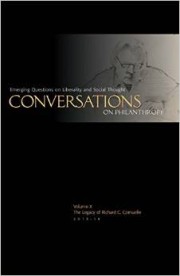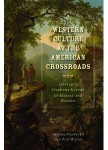Imagining Philanthropy
What is our image of philanthropy? It is a question worth pondering, because our philanthropic practice is powerfully informed by our philanthropic aspirations. A rich image can open up possibilities for philanthropic excellence, enhancing the lives of both givers and recipients. Defective images, by contrast, tend to produce poor philanthropic strategies—strategies that, far from enriching human lives, may actually impoverish them. Of course, no one pretends that the perfect image of philanthropy ever lies ready to hand. Philanthropy must grow, develop, and adapt along with the changing human context in which it is embedded. Yet bringing it to its fullest fruition in our own place and time is an essential mission for each generation.
What kind of philanthropy can we imagine? The answer depends in part on what we understand philanthropy to be. The very meaning of the term is open to question. Consider the following:
- Does philanthropy refer strictly to large transfers of wealth? Or may other forms of giving, such as gifts of time and talent, be equally legitimate?
- Who does it? Is philanthropy strictly the province of nonprofit foundations and their agents? Or is it also accessible to nonprofessionals?
- Who are its targets? Is philanthropy always directed to the public good? Or can it focus on private individuals as well?
- Does motive matter? Can we use taxes or shame to compel giving? Or must we give spontaneously of our own free will?
- Who benefits? Should philanthropic activity be devoted solely to the interests of the beneficiary? Or is there an opportunity to consider the welfare of the donor?
- How do we measure philanthropic performance? Is the ultimate criterion the monetary value of each bequest? Or do important aspects of philanthropy resist appraisal in dollars and cents? By addressing these questions, this essay aims to challenge and stimulate the imagination of philanthropists.
Context
How we answer such defining philanthropic questions hinges on the contexts in which we pose them. In philanthropy as in every field of life, context always exerts an immense influence on the meaning of ideas. Consider the following riddles:
- I live above a star, and yet never burn; I have eleven neighbors, and yet none of them turn; I am visited in sequence, first, last, or in between; PRS are my initials, now tell me what I mean.
- A beggar’s brother died, but the man who died had no brother. How can this be?
- What English word is most frequently pronounced incorrectly?
Each of these verbal puzzles represents an instance of what perceptual psychologists call a figure-ground problem. Our visual assessment of a figure’s size, hue, shape, and motion depend in large part on the background against which it is projected. Simply by changing the background, we can make the large appear small, the dark appear light, the straight appear curved, and the static appear to be moving.




